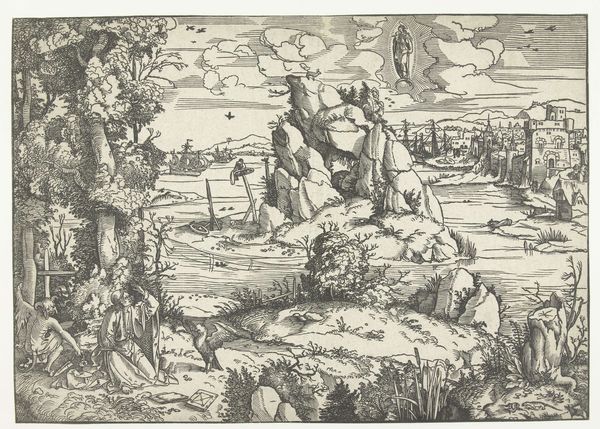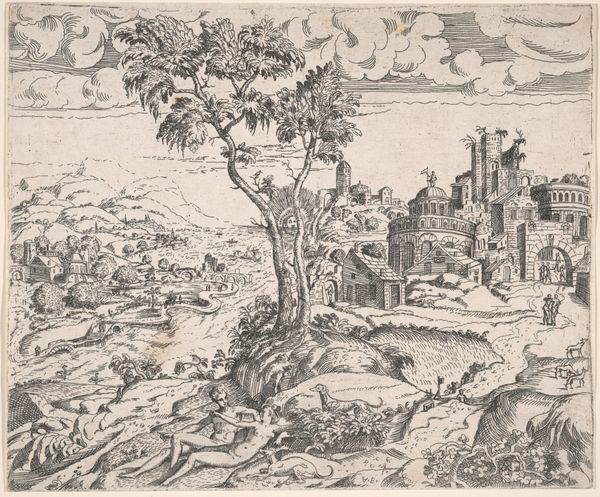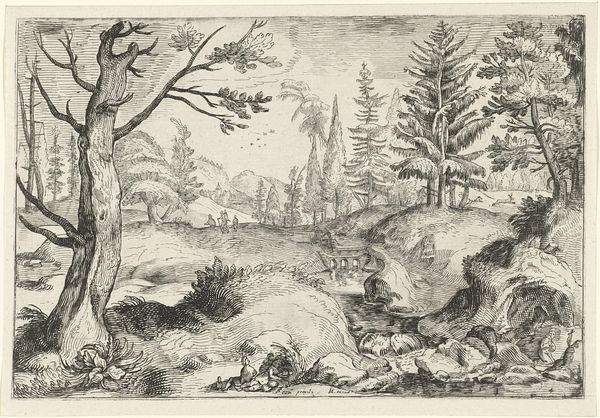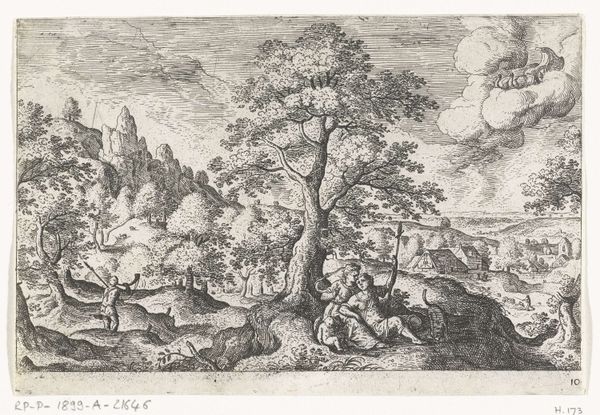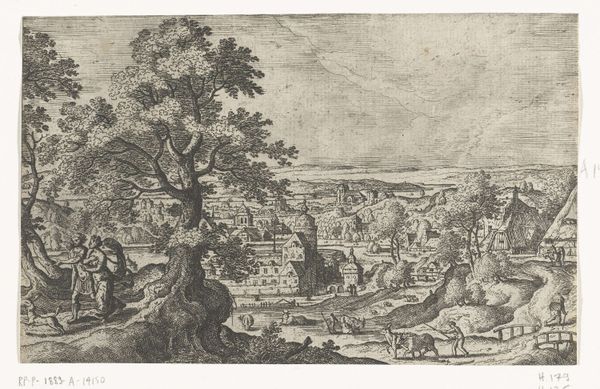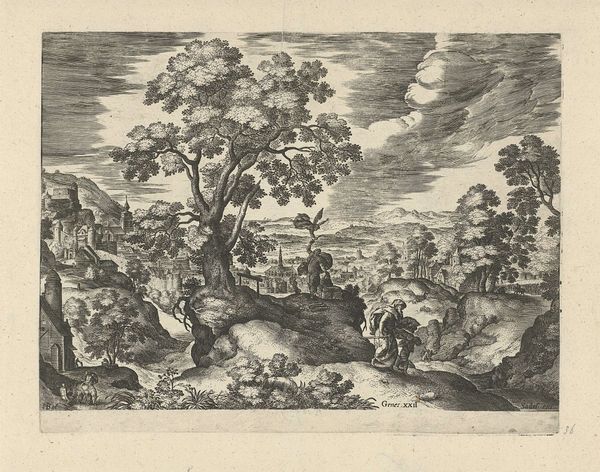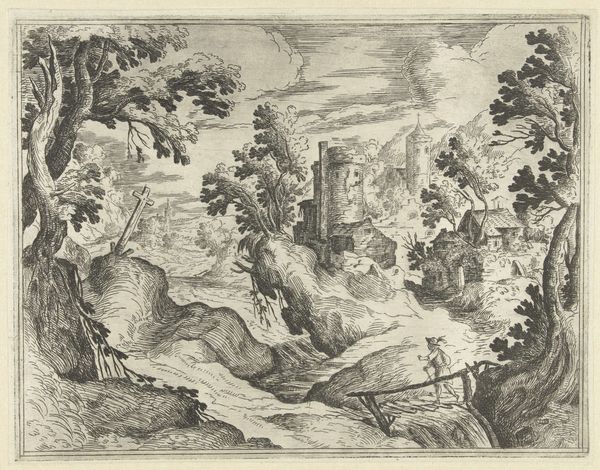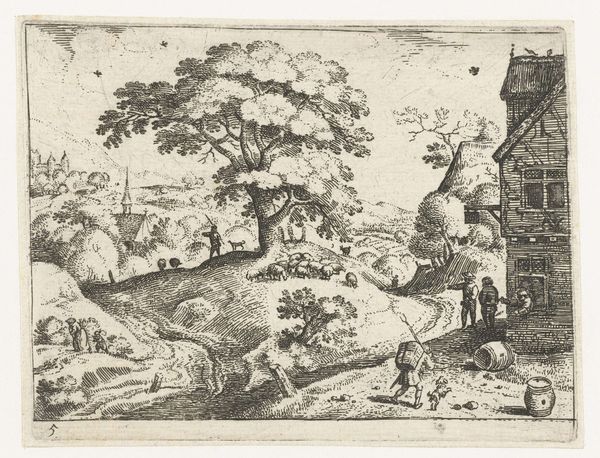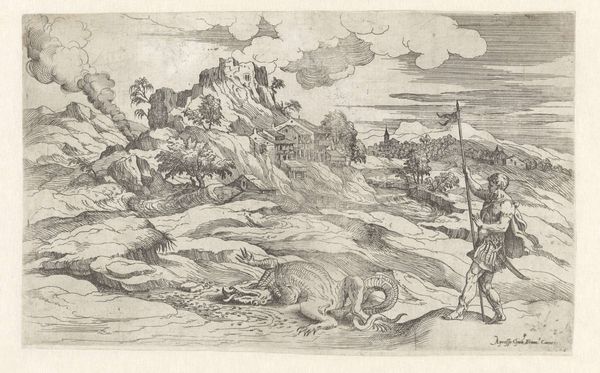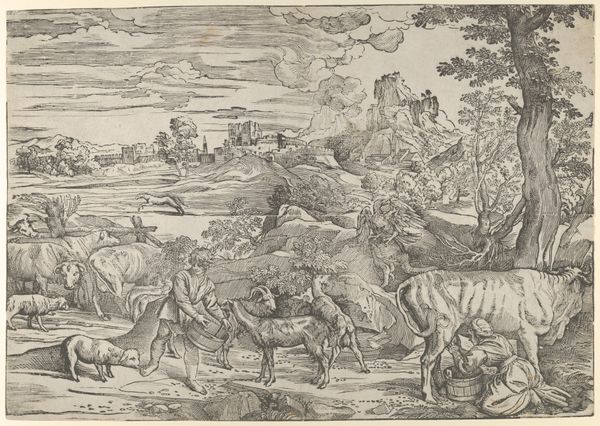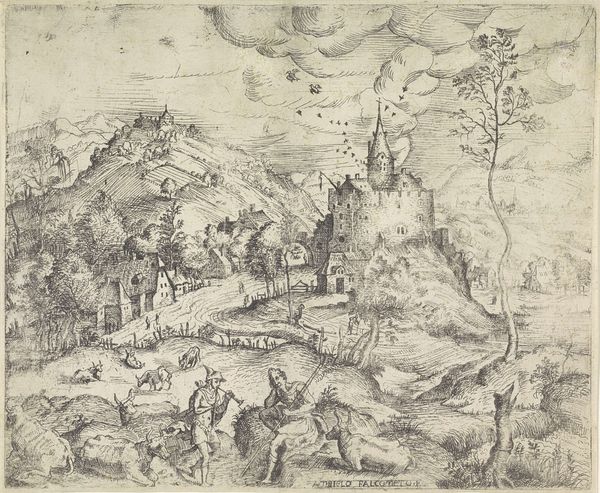
drawing, print, etching, engraving
#
portrait
#
drawing
# print
#
etching
#
landscape
#
figuration
#
form
#
11_renaissance
#
ancient-mediterranean
#
line
#
genre-painting
#
history-painting
#
italian-renaissance
#
engraving
Dimensions: Sheet: 10 1/16 in. × 12 in. (25.6 × 30.5 cm)
Copyright: Public Domain
Curator: Welcome. Here we have "Diana the Huntress in a Landscape," a print made between 1525 and 1547 by Vincenzo Caccianemici. Notice the exquisite detail achieved through etching and engraving. Editor: My immediate reaction is one of brisk energy. The svelte hounds racing along the lower portion are incredibly lively. There's a dynamic quality, almost urgent, despite the archaic medium. Curator: Absolutely. The artist uses a delicate network of fine lines to articulate the scene, giving a subtle, yet defined, musculature to both human and animal forms, while suggesting texture throughout the composition. Note the parallel hatching, employed for shading. Editor: Yes, and consider that this pursuit plays into Diana’s, or Artemis', role as a protector of young women. She demands freedom and represents a certain kind of resistance against patriarchal structures of the time. Perhaps the energy speaks to a desire for independence. Curator: I'd agree that dynamism plays a role, but to understand the piece structurally, look how the figures are integrated into their environment. Observe the layering effects as the forest elements climb the middle ground before resolving in a cityscape upon a high peak in the distance. Editor: The landscape certainly creates an interesting backdrop for considering gender and class at this time, doesn't it? Think of the tradition this echoes – elite women participating in the hunt was a display of status. Curator: That could explain the tension in Diana's stance; though hunting, she embodies restrained elegance. Observe also the curvature of her bow mirroring the arc of the lunar crescent floating above her. There is deliberate geometry everywhere you look! Editor: Indeed! Diana herself carries incredible symbolic weight that reflects both her autonomy and the patriarchal constraints under which that autonomy exists. Thank you, everyone, for reflecting on how such complexities enrich a composition such as this. Curator: A beautiful interpretation—thank you for lending your insights into such a wonderfully evocative piece.
Comments
No comments
Be the first to comment and join the conversation on the ultimate creative platform.
